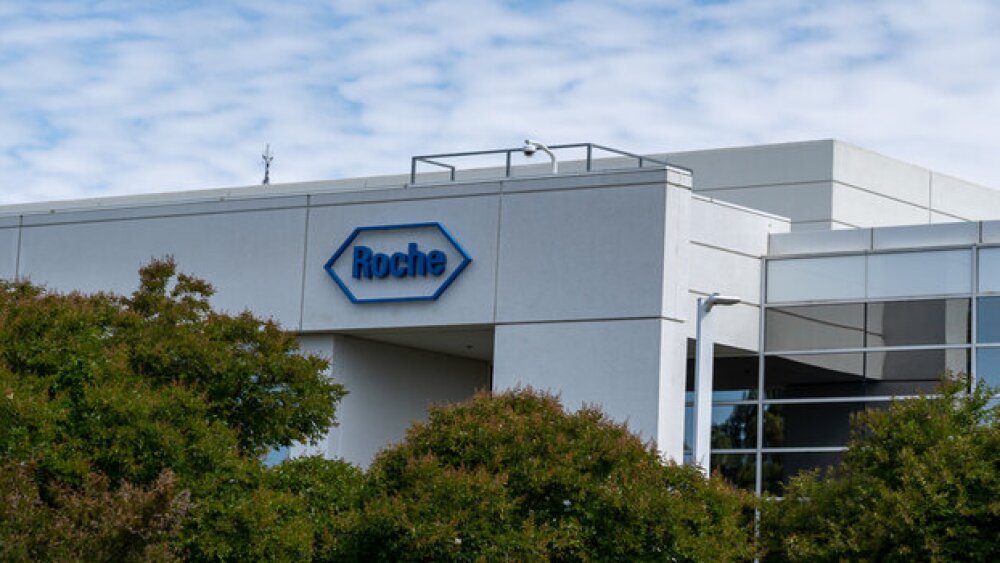The acquisition will give Roche access to Carmot’s clinical portfolio of three GLP-1 receptor agonists, placing it squarely in the middle of the competition to treat overweight and obesity.
Pictured: Roche’s building in California/iStock, JHVEPhoto
Roche on Monday announced it has entered into a definitive merger agreement with Berkeley, California-based Carmot Therapeutics, a move that could place it in the thick of the lucrative and increasingly competitive weight-loss market.
As per the terms of the acquisition, Roche will make an upfront payment of $2.7 billion at the transaction’s close, which the companies anticipate will occur in the first quarter of 2024, pending regulatory and anti-trust clearance. Carmot’s equity holders will also be eligible for up to $400 million in additional payments, contingent on the achievement of certain milestones.
In return, Roche will gain access to Carmot’s portfolio of preclinical and clinical assets, including three GLP-1 receptor agonists, which have “best-in-class potential to treat obesity,” according to Monday’s news release.
Carmot’s lead asset is CT-388, a dual agonist of both the GLP-1 and GIP receptors that is ready for Phase II testing. Designed to be administered once per week via a subcutaneous injection, CT-388 has the potential to be a standalone therapy or could be used in combination with other weight-loss treatments for patients with and without type 2 diabetes, according to Roche.
In a Phase Ib study, CT-388 “demonstrated substantial weight loss,” Levi Garraway, Roche’s chief medical officer and head of global product development, said in a statement, adding that “these data suggest the potential for a differentiated profile to treat obesity and its associated diseases.”
Roche will likewise obtain the mid-stage asset CT-868, which is also a dual GLP-1/GIP receptor agonist. Unlike CT-388, CT-868 is designed as a once-a-day subcutaneous injection and is being tested for type 1 diabetes patients with overweight or obesity. Carmot launched the Phase II study of CT-868 in this indication last month.
In October, at the Obesity Society’s Obesity Week 2023, Carmot presented 26-week data for CT-868, showing that it could elicit significant improvements in HbA1c and blood pressure, among other cardiovascular risk factors, in overweight or obese type 2 diabetes patients.
Monday’s buyout will also include CT-996, a once-daily oral small molecule agonist of the GLP-1 receptor, as well as Carmot’s pre-clinical programs.
Garraway called Carmot’s portfolio “broad,” particularly as its assets offer “different routes of administration and opportunities to develop combination therapies” not only to address obesity, but also to potentially target other conditions, including cardiovascular, retinal and neurodegenerative diseases.
The acquisition agreement with Roche comes two weeks after Carmot filed for an initial public offering, joining a small but courageous club of biotechs that have sought to debut on Nasdaq amid the fraught 2023 market.
For Roche, the acquisition represents a return to the obesity market, which some analysts forecast could reach up to $200 billion in value in the coming years. The pharma had previously been developing the GLP-1 analog taspoglutide, which entered into Phase III clinical trials in 2008. By 2011, however, Roche had abandoned the candidate because of its side effects.
Tristan Manalac is an independent science writer based in Metro Manila, Philippines. He can be reached at tristan@tristanmanalac.com or tristan.manalac@biospace.com.






